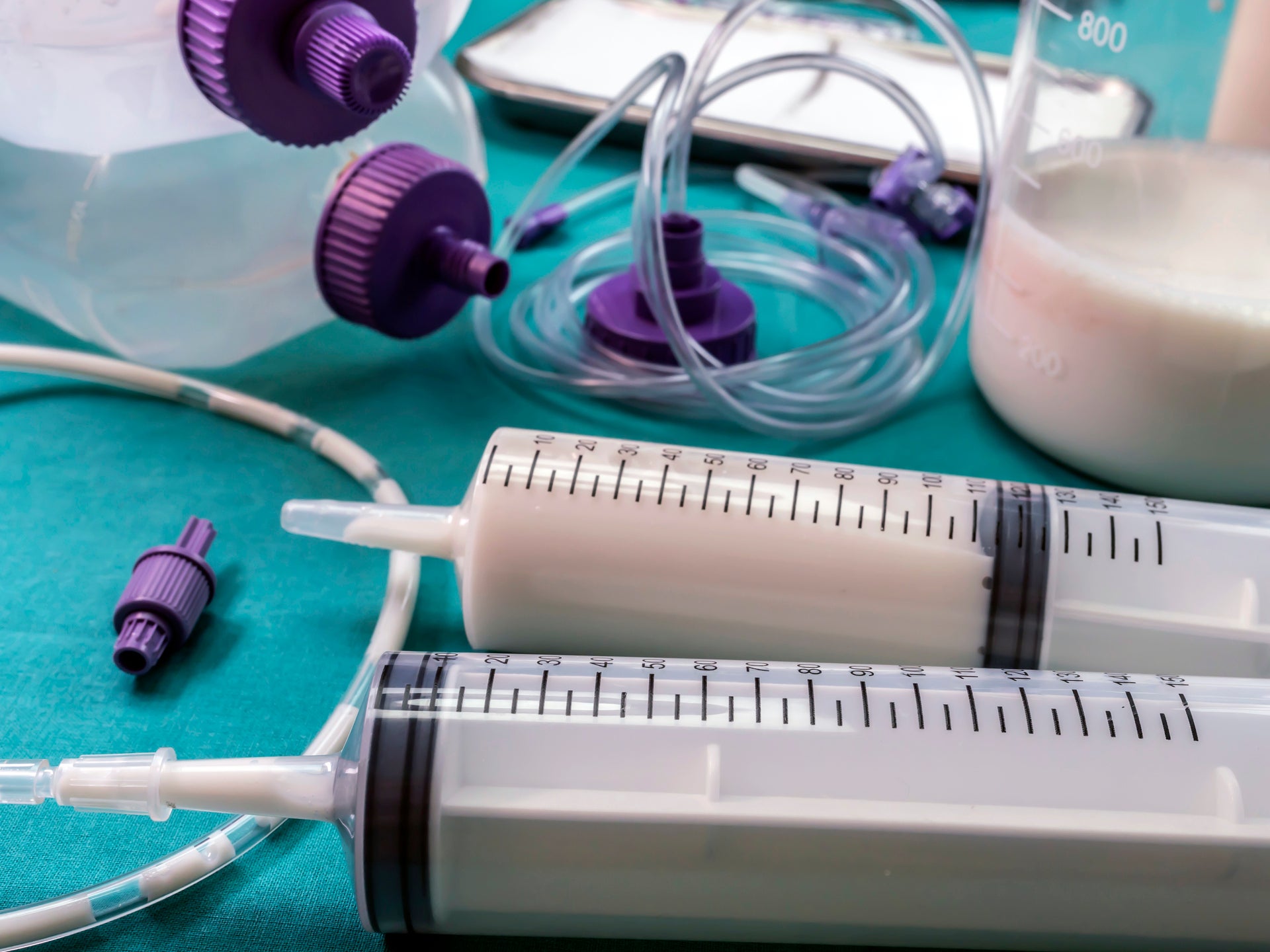NHS guidance ‘too long to read,’ say hospital staff as safety watchdog exposes systemic risks to patients
One patient had 1,450ml of liquid feed wrongly put into his lungs after mistake

Your support helps us to tell the story
From reproductive rights to climate change to Big Tech, The Independent is on the ground when the story is developing. Whether it's investigating the financials of Elon Musk's pro-Trump PAC or producing our latest documentary, 'The A Word', which shines a light on the American women fighting for reproductive rights, we know how important it is to parse out the facts from the messaging.
At such a critical moment in US history, we need reporters on the ground. Your donation allows us to keep sending journalists to speak to both sides of the story.
The Independent is trusted by Americans across the entire political spectrum. And unlike many other quality news outlets, we choose not to lock Americans out of our reporting and analysis with paywalls. We believe quality journalism should be available to everyone, paid for by those who can afford it.
Your support makes all the difference.NHS staff have told a safety watchdog rules on how to avoid mistakenly putting a feeding tube into patients’ lungs are “too long to read”.
The Healthcare Safety Investigation Branch revealed some NHS staff had admitted not reading official guidance on how to avoid the ‘never event’ error as part of a new report identifying deeper systemic problems that it said left patients at an increased risk.
The independent body warned patients across the NHS remained vulnerable to being injured or even killed by the error that keeps happening in hospitals despite warnings and safety alerts over the last 15 years.
HSIB launched a national investigation into the problem of misplaced nasogastric (NG) tubes after a 26-year-old man had 1,450ml of liquid feed fed into his lungs in December 2018 after a bike accident.
The patient recovered but the error was not spotted, even after an X-ray.
HSIB said staff had suffered from what it called “inattentional blindness” meaning they missed what was visible because their attention was elsewhere because they were worried about the patient who had become sicker.
NG tubes are put down the nose and oesophagus into the stomach to give medication, fluid and liquid feed to patients.
The problem of misplaced nasogastric tubes has been a persistent patient safety error in the NHS for more than 15 years. There have been repeated alerts and warnings to hospitals and doctors as well as coroners inquests and clinical negligence claims.
Between September 2011 and March 2016, there were 95 incidents of a misplaced tube reported by NHS staff. The latest data shows there were 14 incidents between April and September this year.
Normally an NG tube is checked by testing the acidity of fluid from the stomach or an X-ray to see the tube is in the right place.
HSIB said despite the error being well known there were no systemic barriers in place to stop it from happening.
In a new report on Thursday it said one problem was inconsistent training and standards as well as staff not reading official guidance.
In its report HSIB said: “Staff told the investigation they know the guidance is there, but such guidance is too long to read.”
It said PH testing was unreliable and different manufacturers of the testing strips used different colour coding with no standard process for reading them. It also warned that there was no consistency in training in how to do a test or interpret the result, no was there a proper system for checking staff were competent.
HSIB said using X-rays to confirm the tube was in the right place was also prone to errors with no standardised process for checking staff were skilled to do it adding: “People described different ways of interpreting an X-ray.”
The report recommended new national training for using PH testing and X-rays to check NG tube placements with a formal accreditation that would be recognised across the NHS. It also called for changes in the design of PH strip products.
Dr Stephen Drage, director of investigations at HSIB and an intensive care consultant said: “NG tubes are used successfully every day to deliver vital fluids and food to patients in hospitals across the country.
“However, just one wrong placement has the potential to cause severe complications and harm. This can be devastating for all involved especially as NG tubes tend to be needed by critically ill and vulnerable patients.”
He added: “We identified that there aren’t strong barriers in place to prevent this and that there was potential for improvement in a number of areas - from procurement and design of devices to staff competency training and report of incidents. The investigation also highlights that more research is needed to understand future technological solutions that could provide an even stronger barrier to error.”



Join our commenting forum
Join thought-provoking conversations, follow other Independent readers and see their replies
Comments